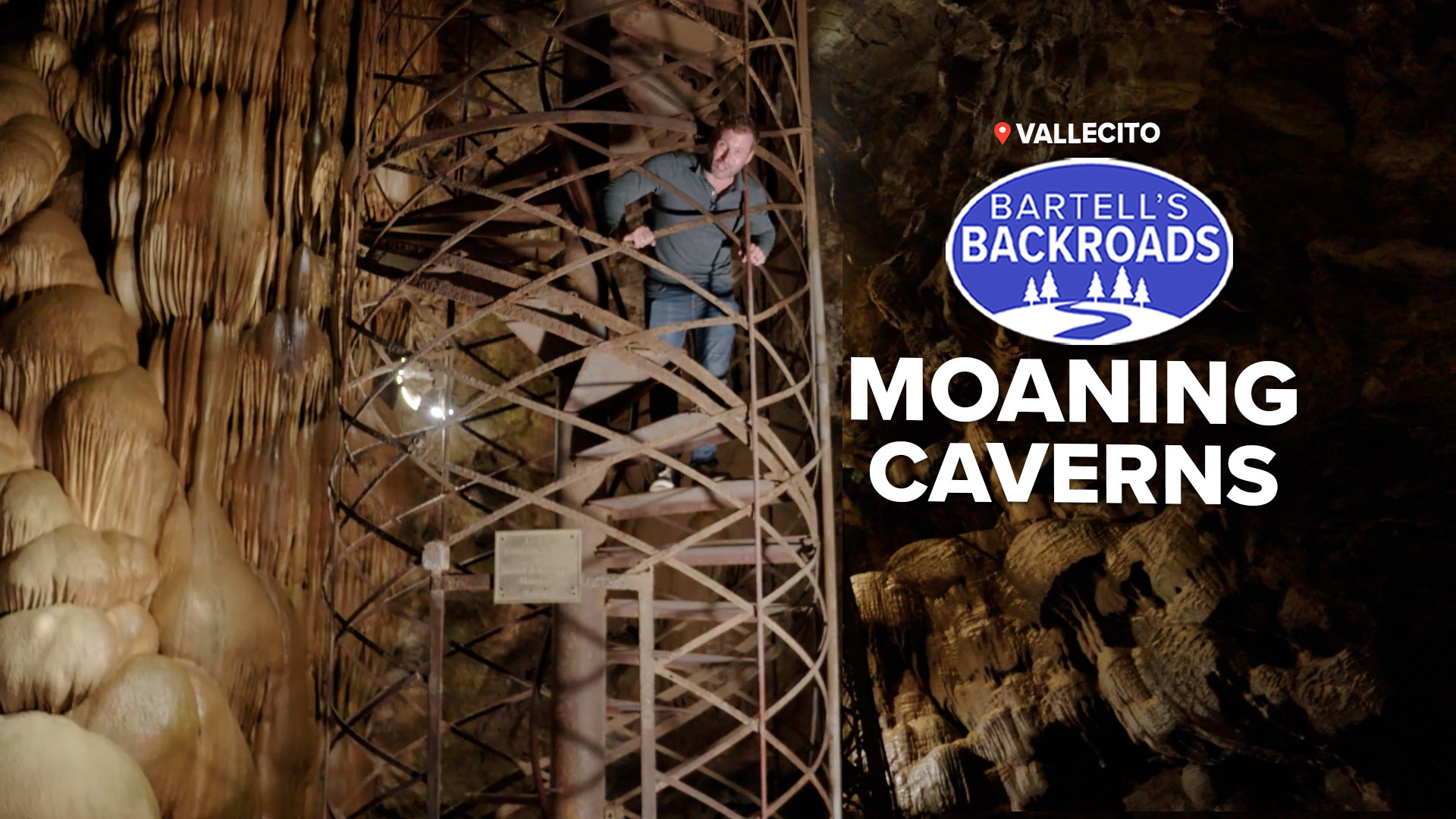VALLECITO, Calif. — In December of 1851, the Daily Alta California newspaper described the discovery of a deep, dark cavern in Calaveras County. Miners who lowered themselves to the bottom claimed to find skeletons, while others who passed by the entrance heard strange noises.
The cave later became known as Moaning Caverns, the largest single cave chamber in California. If you want to make it to the bottom, you are going to follow cave naturalist Serena Barth through the narrow passageway and down the 235 steps.
Barth said before the steps and the lighting, tourists were lowered into the cave while sitting in a bucket.
“Think about the size of half a wine barrel. So, you had the anchor back that way somewhere, and then you had a like a hand crank or a wheel that your guides would lower you down on,” Barth said.
In 1922, owners of the cave built a 100-foot-tall spiral staircase to get to the bottom. Building it was quite engineering feet. Construction crews started from the top and welded bits and pieces of steps from an old World War I battleship together 'til they hit bottom.
► See an interactive map of everywhere John has visited on the backroads
► Watch all of the Backroads videos
► Follow John on Facebook
The name Moaning Caverns has to do with the sound dripping water makes when it hits the bottom of the cave.
“This cavern’s very, very echoey, and that sound can be heard on the surface sounding like a hum or moan,” Barth said.
The curious noise is what attracted many early people to discover the cave, but the noise has a dark side.
“We do have some history of Indigenous people thousands of years ago falling into the cavern, most likely because of the moaning noise,” Barth said.
Along with the strange noises, you will also get to experience several geological wonders.
“So, stalactites are the ones that hang tight to the ceiling. Stalagmites might reach the ceiling someday,” Barth said of the many formations pointing down from the ceiling and growing up from the floor throughout the cavern.
The cavern itself was formed by water erosion and shifting of the earth, but the unique formations on the cave wall are a result of calcite deposits in the water that stick to each other over a really long time.
“Approximately 10 million years old, that's all. That's pretty old,” Barth said.
No matter what direction you look you’ll find spectacular formations, but what you won’t find in the cavern is gold.
“No gold was found in the caverns and it's a good thing because I suspect that the gold miners probably wouldn't have been kind to the cavern formations had there been gold found around them,” Barth said.
Getting to the bottom of the cave is the easy part. Going up is another story, but you don’t want to get left behind because when Serena leaves, she shuts the lights off.
MORE FUN UNDERGROUND ON THE BACKROADS: A dazzling underground display that took thousands of years to create awaits, right next to an unforgettable view of Lake Shasta.

